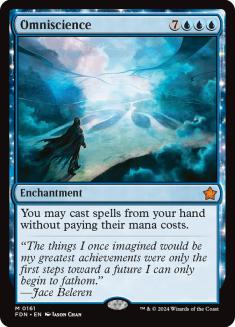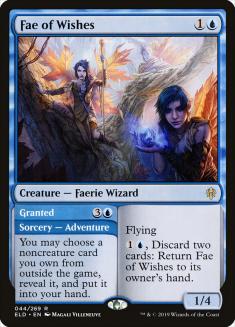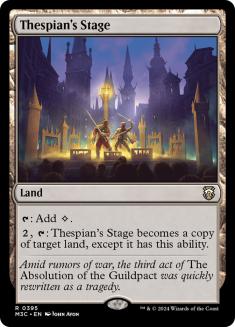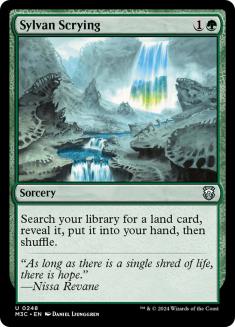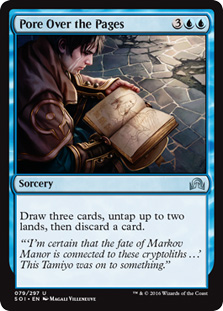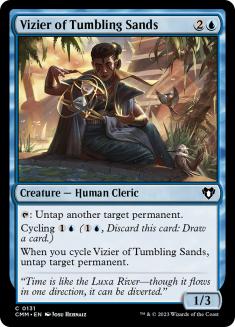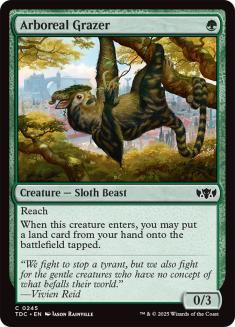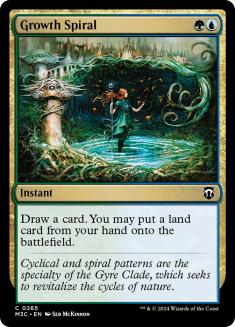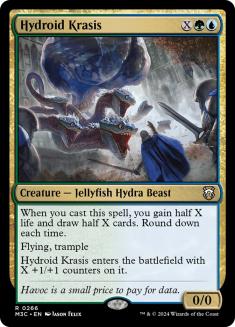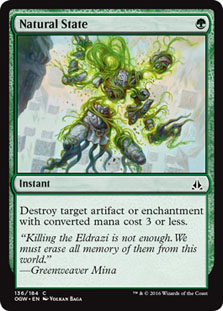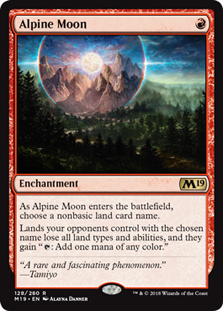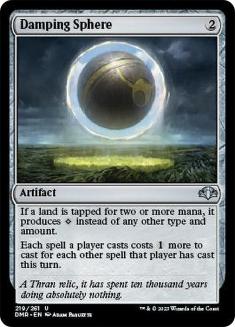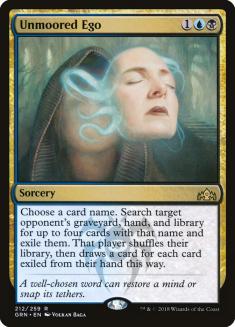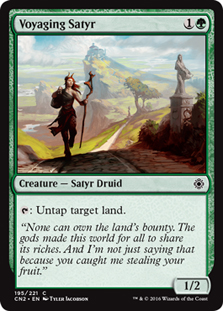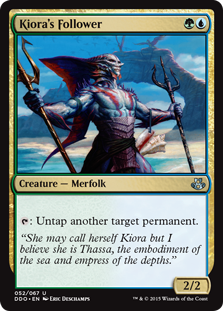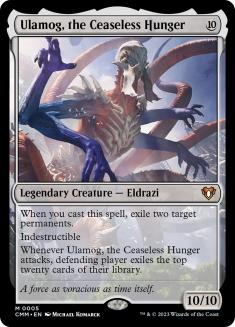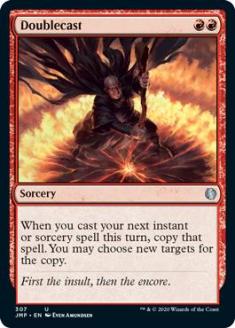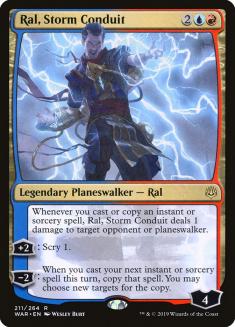With seven years of sets and counting, Pioneer was bound to churn out some spicy strategies over time. Even if a lot more anti-combo design rules were enforced over that era so we don’t have things like Blazing Shoal or Mox Opal, the sheer volume of cards means something is going to start breaking some basic rules and going wild.
The first deck to break that barrier is Lotus Field Combo. You get a Lotus Field on the battlefield, do some stuff to untap it and generate lots of mana each time, and then win the game from there.
Creatures (12)
Lands (23)
Spells (25)

The deck originated towards the end of the Pioneer Week PTQs but has made fairly significant strides since then. While Once Upon a Time was banned, it was one of the less crucial components in this deck. Jacob Nagro (banjocargo on Twitch) has been streaming the following list to solid results:
Creatures (16)
Lands (24)
Spells (20)

The Basic Combo
There tend to be two kinds of combo decks in Magic: generic engine and deterministic win. To use two Pioneer examples, Simic Nexus is an engine deck and Possibility Storm is the extreme of deterministic. Simic Nexus just starts casting Nexus of Fate in spots where each extra turn generates more cards and a high chance of the next Nexus of Fate, and each incremental turn eventually ends up in a clean loop where you win. Possibility Storm is just Possibility Storm, a sorcery Adventure, and an Enter the Infinite in your deck and the game ends.
Lotus Field Combo sits somewhere in the middle. You’re looking at a deterministic endgame, but there is a small engine that lets you build up to that finish.
When I talk about cards, there’s going to be a lot of discussion of mana counts that bridge you to the win, but also some evaluation of what you can actually accomplish with the engine and what spots you can spin the wheels a bit and see what happens. You should be thinking about this deck in the context of “What is my current mana cap?” and then “What can my card draw bridge me to?”
With the proper framing in place, let’s get to the cards.
The Lotus Field Combo makes the most sense to talk about starting from the end. You win the game by casting the Granted half of Fae of Wishes to find and cast Omniscience, which costs fourteen mana. After that, you find another Fae of Wishes or just reloop the initial one, Granted for Enter the Infinite, which then draws your deck. Another Granted finds Jace, Wielder of Mysteries, and a +1 Thought Scour wraps the game up.
So Step 1 is get to fourteen mana with a Fae of Wishes in hand and something to do with Omniscience. Eighteen mana with two extra dead cards in hand is “something to do with Omniscience” as well, since you can recast the Fae of Wishes, return it to your hand, and Granted from there for a win.
A quick note on this: Omniscience lets you cast cards from your hand for free. That means you can Granted for free, but a Fae of Wishes cast from exile costs mana. Hence the eighteen mana number is fourteen for Granted into Omniscience, and then another four to cast and recur the Fae of Wishes.
Fae of Wishes also gives you a huge toolbox of other effects to access in a game. Lotus Field tapping for any color of mana gets leveraged hard in the sideboard.
The mana engine here is Thespian’s Stage and Lotus Field. While playing Lotus Field only nets you a single mana beyond the two lands you sacrificed, Thespian’s Stage dodges the enters-the-battlefield trigger and lets you use a single land drop for three mana after the initial copying investment. Since Lotus Field has hexproof, it is really hard for opponents to interact with this setup.
Sylvan Scrying helps you find either the initial Lotus Field to get spun up or the Thespian’s Stage to copy it with. There currently isn’t a big toolbox with the card since you are largely using it to find combo pieces, but another value card past Blast Zone isn’t out of the question.
It is worth noting the third Lotus Field is much less exciting than the second, since nothing untaps three lands at a time. In your true combo games the third Lotus Field or copied Lotus Field isn’t that much better than a normal land drop.
The reason the second Lotus Field is so important is that the Twiddle effects in Pioneer untap multiple lands at a time. You can’t really go off with just one Lotus Field, as that doesn’t generate close to enough mana to get to fourteen with your pricier untaps, but with two Lotus Fields your Hidden Strings generates a ton of mana.
The exact numbers with two Fields:
- Hidden Strings generates four mana
- Pore Over the Pages generates one mana
- Vizier of Tumbling Sands also generates one mana
The cleanest math is that two Hidden Strings plus two untapped Lotus Fields generates fourteen mana to Granted for Omniscience, but this clean math can often be buried in messier sequences.
Some specific notes on each card:
- Pore Over the Pages is pretty easy. You cast it, that’s great, because drawing cards for negative mana is great. This is the main “engine combo” play of the deck, where once you have double Lotus Field you just Pore Over the Pages and see where you get from there.
- Vizier of Tumbling Sands is actually a castable card and doesn’t just cycle to untap Lotus Field. It isn’t a typical play, but it can act as a second Lotus Field by tapping to untap the first one. You can then Hidden Strings the Lotus Field and the Vizier of Tumbling Sands the same way you would untap two Lotus Fields; you just can’t generate mana with a Pore Over the Pages the same way. The most common way this happens is if you have two Vizier of Tumbling Sands. You float mana off the lands you are going to sacrifice to Lotus Field, play Field, cycle the first Vizier to untap it, and use it to cast the second one as a setup for a huge following turn.
- Hidden Strings has cipher. There’s a lot of italicized reminder text, but it’s largely flavor text here because you usually would rather have the card in your graveyard for Dig Through Time delve. There are occasional spots where you have a Fae of Wishes or Hydroid Krasis that is going to attack, and you can Granted pre-combat and then use the untapped Lotus Fields to cast something post-combat.
In general, you should not be firing off Hidden Strings without a clear idea of what your end goal is. While the other untap effects replace themselves and don’t generate enough mana to push towards a combo, Hidden Strings is entirely mana. Since it is such a huge mana jump towards your larger goal, often each copy you find is a crucial part of assembling the eventual kill.
The main limiting factor of this deck is actual land drops. You typically need to hit your third for Lotus Field, then a fourth for Thespian’s Stage, and then often are an untap step away from a kill. It shouldn’t be shocking the worst matchups for this deck are the hyper-aggressive go-wide red decks with Atarka’s Command or Goblin Piledriver, and you need ways to get ahead of this curve to win in those and many other matchups.
So despite the common knowledge that Arboreal Grazer is a card for a deck with closer to 30 lands, you are really interested in hitting your third land drop faster here.
The last piece tying it all together is some absurdly powerful card draw.
Hydroid Krasis is the alternate win condition and the biggest addition to this deck since the initial lists. It allows you to threaten a fair game through interaction, and then combo if they spend resources answering the Hydroid Krasis. Gadwick, the Wizened is a similar scaling effect to sink Twiddle mana into that gives you more cards, but the lifegain and solo threat are both reasons to play Hydroid Krasis instead. Hydroid Krasis also plays better against countermagic, both assuring the card draw and often forcing a counterspell answer to the body.
Dig Through Time is just broken. Not much more to it. Lotus Field incidentally fuels it by sacrificing lands. The only caveat to the card is that you are going to end up down mana casting it unless you find Hidden Strings, so the idea of Dig through Time as a way to try to chain a small combo into a big one is very much a calculated risk. That isn’t to say you don’t start a turn with Pore Over the Pages, find a Dig through Time, and fire it off, just that doing so is often going to lead to a smaller Granted play unless you are loaded with mana and just looking for a finisher.
Sideboard Guide
Don’t.
Okay, fine. Sometimes you need Mystical Dispute more than you want to have it as a Granted option. You bring it in for basically a random card, usually a Growth Spiral or Hydroid Krasis or, if you are really wild, a Vizier of Tumbling Sands.
Every card in your sideboard is the combo, an alternate threat, or some scale of sweeper. Which one you should Granted for in a given spot is half mana scaling, half the situation. The sweepers let you use anywhere from five to twelve mana for increasing degrees from one turn to a sweeper that wins the game after it cleans up, and where the alternate threats are more things you look at the matchup and Granted for in advance if you need to battle without the combo.
The one card outside these groupings is Natural State, which is entirely an answer to hate permanents. Lotus Field Combo is absolutely something other decks can target if they are afraid of it, and a lot of the deck’s current equity is based on people not doing that. You have Blast Zone as another way to clean these up, but Alpine Moon and Damping Sphere are pretty big issues. If you can’t use Lotus Field to churn up mana, you need the absolute cheapest answer, and that’s Natural State.
Of these cards, Damping Sphere is the bigger issue. Alpine Moon removing the abilities of Lotus Field is often something you can exploit since it removes the land sacrifice requirement, allowing you to play additional Lotus Fields at no cost and explode once you eventually answer the Alpine Moon.
An opposing Unmoored Ego is less of an issue for this deck than you would assume. Often you can race your first Lotus Field out before they can cast Unmoored Ego, at which point they can’t exile both your Thespian’s Stage and future Lotus Field with a single Unmoored Ego. They can name Fae of Wishes, but you can kill them with Hydroid Krasis or have resolved a Granted first and keep a Fae of Wishes safe in exile. If you are really afraid, you can even sideboard in the Ugin, the Spirit Dragon, but I would advise against that if casting Granted for that card is an exciting prospect.
Alternate Builds
Lotus Field is a fairly generic engine. Untap it, make tons of mana. While this deck is a true combo application, there are more pure ramp shells for the card. Sacrificing lands triggers Aetherworks Marvel for energy, and I wonder if this is a reasonable way to cast various giant Eldrazi as a backup to that card.
If you want to stay in the combo realm, another similar Lotus Field deck has popped up in Pioneer Leagues.
Creatures (4)
Planeswalkers (2)
Lands (22)
Spells (32)

I have a lot of smaller nitpicks with this list, like there not being enough Thespian’s Stage or Dig through Time, but the premise is solid. If you set up multiple Lotus Fields and copy Pore Over the Pages with Doublecast or Repeated Reverberation, you probably win because that is effectively Time Spiral. Rather than a strict mana count combo, you eventually cast Explosion or Ral, Storm Conduit for the win. You can just cast the full twenty spells after resolving Ral or go off with the Expansion combo from Standard.
The interesting part of this deck is that Hidden Strings is fairly unimportant to it. You are mostly interested in card velocity with your mana. There’s room to wiggle stuff around and end with a potentially more interactive shell that accomplishes almost everything this rough list does. This is also a much better Treasure Cruise list than the Fae of Wishes one, something worth thinking about in the likely eventuality of a Pioneer format without Dig through Time.
Lotus Field has solidly added itself to the long list of influential cards from 2019, but unlike almost all the other ones, it is breaking the game in a classic combo way. If you are looking for something completely outside the typical aggro-midrange fare of Pioneer, Lotus Field Combo is the place I would start.



